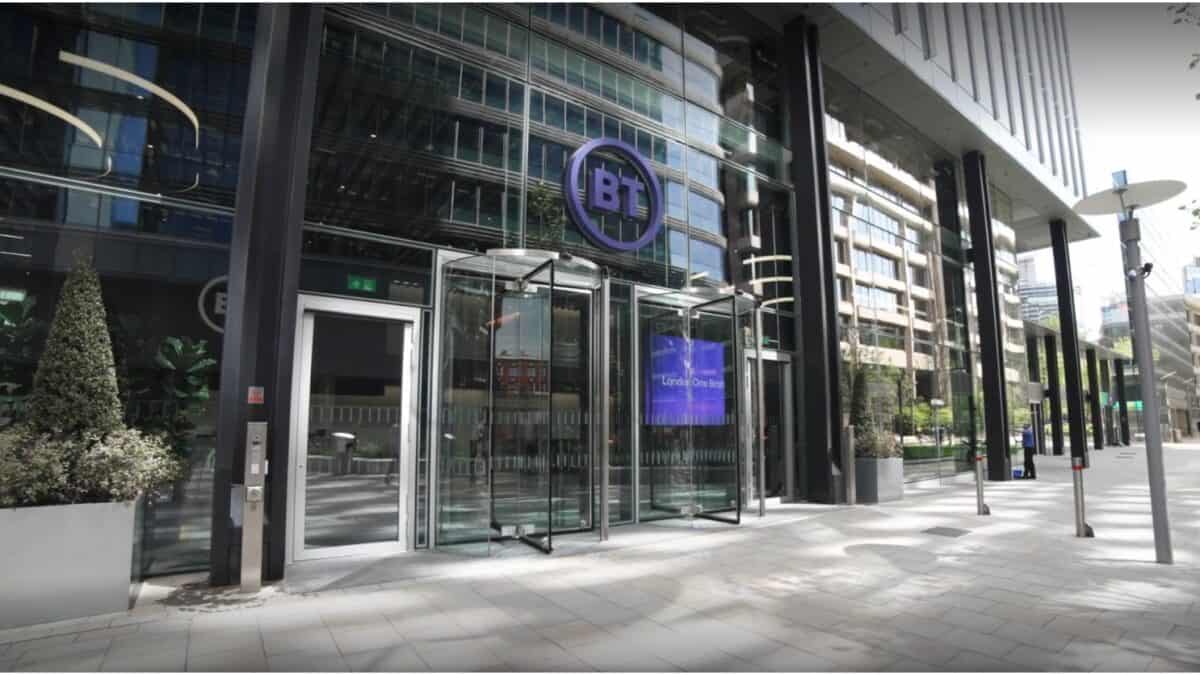
Image source: BT Group plc
I really thought the last set of full-year results would have given the BT Group (LSE: BT.A) share price a boost, after the telecoms giant told us it had reached a key milestone.
It did for a brief spell, but the shares flattened again. Then the price dipped after this year’s H1 results on 7 November. The lacklustre response comes despite BT having soothed my nerves on my key dividend worry.
What has to happen for the BT share price to start climbing again?
Past peak costs
I need to remind myself what the FY results fuss was all about:
Having passed peak capex on our full fibre broadband rollout and achieved our £3 billion cost and service transformation programme a year ahead of schedule, we’ve now reached the inflection point on our long-term strategy — CEO Allison Kirkby, May 2024
I saw the capital expenditure needed for broadband rollout as risking potential hits for two important factors: BT’s debt mountain and the prospects for its dividend.
Dividend outlook
The dividend‘s forecast at 5.2% this year, rising to 5.3% by 2027. That’s not a huge yield, but it has one key thing in its favour. Forecast earnings should cover it, 1.7 times in the 2024-25 year, and up to 2.0 times going by 2027 forecasts.
BT hasn’t had to do what I’ve feared the most, namely lowering its dividend, the way rival Vodafone did with a 50% cut. This year’s progress has boosted my confidence in BT’s long-term dividend prospects. But how do debt forecasts look?
Debt rising
With H1 results, I didn’t like what I saw. Net debt was up to £20.3bn, despite those cost savings and the slowing of capital expenditure. The board said it was mainly due to £0.8bn scheduled pension scheme contributions, which would do it.
Forecasts put the figure at £19.9bn by March 2025, and up at £20.2bn by 2027. Will passing this “inflection point” ever have any effect on debt?
Outlook
At the interim stage, BT spoke of “revenue growth and EBITDA growth ahead of revenue, enhanced by cost transformation from FY26 to FY30“. That, it seems, should feed through to “normalised free cash flow of circa £2bn in FY27 and circa £3bn by the end of the decade“.
Forecasts reflect that, putting 2027 free cash flow at £1.96bn. I just wonder why nobody appears to expect any of it to be used to make a serious attempt at getting BT’s debt down.
The share price
There’s a consensus target of 202p for the BT share price right now. It suggests a healthy 29% rise from today to get there. To know whether that’s going to be realistic, I think we might have to wait for the next FY results. They’re not due until May 2025, but a Q3 update in January might give us a clue.
I’m increasingly drawn to BT as a dividend stock. But I really want to see that inflection point turning into hard cash first.













